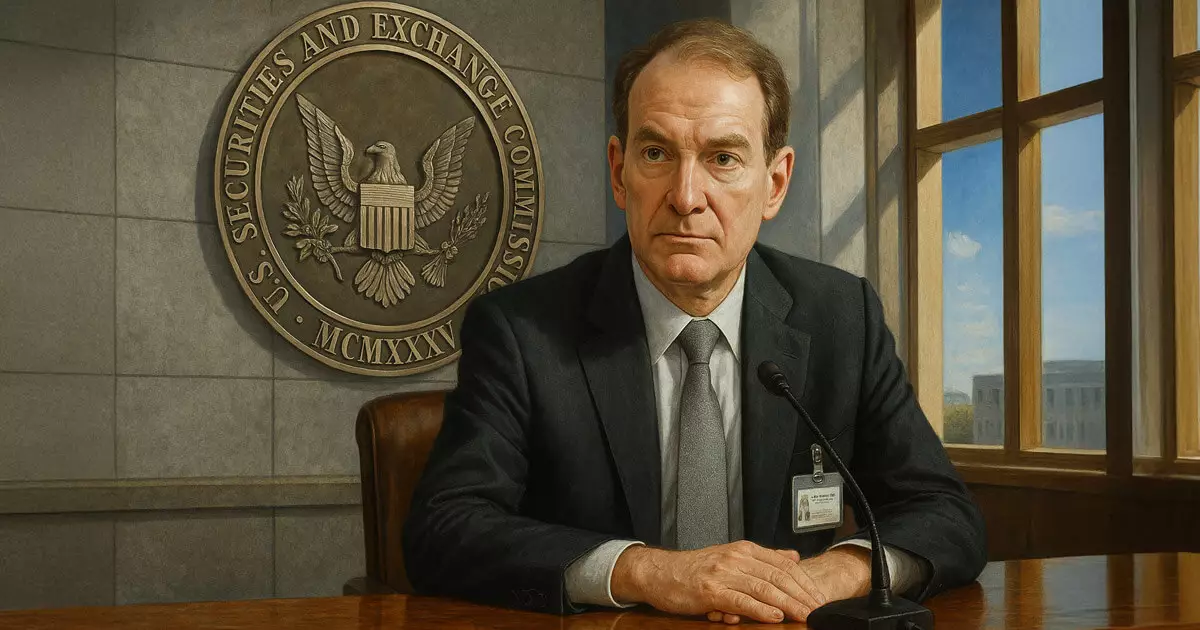The U.S. Securities and Exchange Commission (SEC) under Chairman Paul Atkins is embarking on a radical transformation that could potentially reshape the entire landscape of digital asset regulation. In a recent address, Atkins made it apparent that the SEC intends to move away from its former “shoot-first-and-ask-questions-later” approach towards a more constructive framework. This significant pivot underscores a desire to foster innovation rather than stifle it. In an environment where crypto firms have felt suffocated by vague guidelines and punitive actions, Atkins’ commitment to engage with the industry presents a refreshing shift that could invigorate investor confidence and, in turn, stimulate economic growth.
From Opposition to Cooperation
Atkins’ criticism of the SEC’s historical stance against digital assets resonates strongly with those in the industry who have long felt marginalized. Echoing sentiments of frustration, his commitment to transparent engagement with crypto firms is a welcome departure from what can best be described as a culture of suspicion. By promising to create formal rule proposals specifically designed for the crypto ecosystem, Atkins is effectively laying the groundwork for a collaborative environment. The notion that the agency should work alongside industry leaders to address concerns rather than working in opposition is a substantial step forward, giving hope that the SEC will finally learn to treat digital innovation as a partner rather than a threat.
Setting the Stage for Transformation
A key highlight of Atkins’ vision is the concept of a “super-app” in financial services that encompasses both traditional securities and digital assets under one roof. This idea doesn’t just promise to lower transaction costs; it could also streamline processes, allowing for seamless integrated trading experiences. Imagine a world where the friction between digital and traditional assets diminishes, opening new avenues for retail and institutional investors alike. The SEC’s potential move to regulate both asset types in a unified framework could lead to a more competitive market, pushing financial innovation further into the mainstream.
Rethinking Regulatory Structures
Atkins has also expressed a desire to dismantle the existing FinHub structure, which has often been seen as an overly cautious entity that stifled meaningful dialogue. By embedding innovation priorities throughout the Commission, rather than isolating them within a single hub, the SEC is set to respond more dynamically to emerging technologies. This represents a crucial evolution in regulatory philosophy, suggesting that the SEC can no longer afford to remain static while industry evolves around it.
Charting a Promising Future
While specific rule changes are in the pipeline, Atkins has already set a tone of optimism. By embracing the digital asset ecosystem, the SEC has the opportunity to redefine itself from being an obstacle to becoming an advocate for progress. The implied message is clear: instead of merely monitoring compliance, this new SEC aims to work collaboratively to address the needs and challenges facing the evolving crypto landscape. Such a revolutionary approach is not just welcomed—it’s essential if the U.S. intends to maintain its position as a leader in global financial innovation. With this shift, Atkins may very well be paving the way for a future filled with new opportunities and sustainable growth in the digital asset market.















